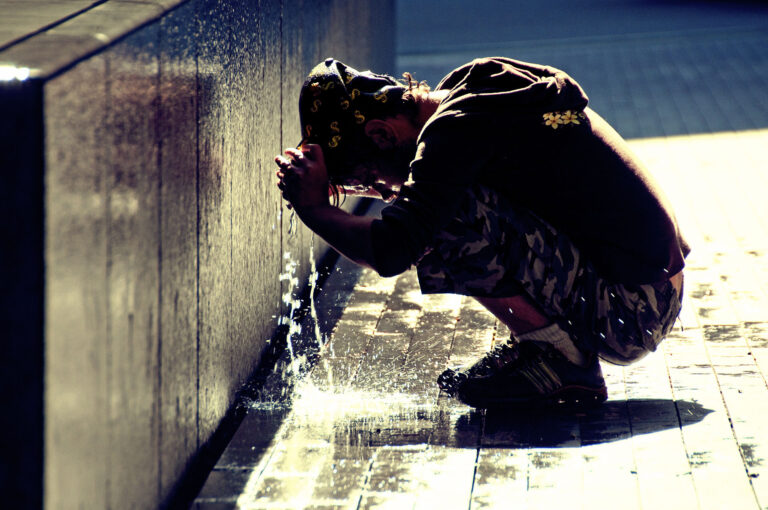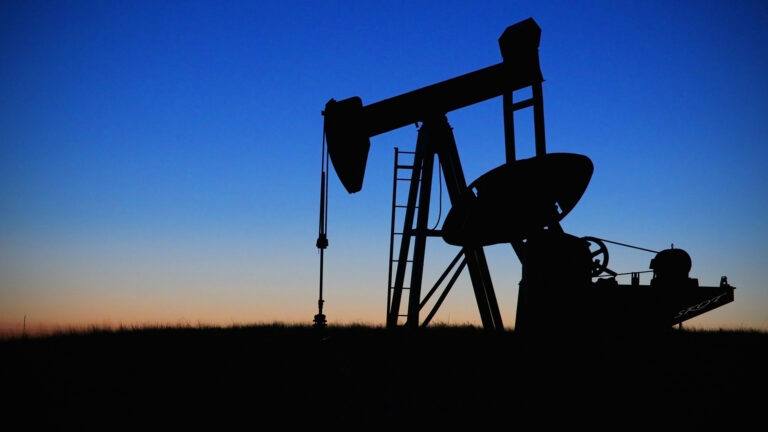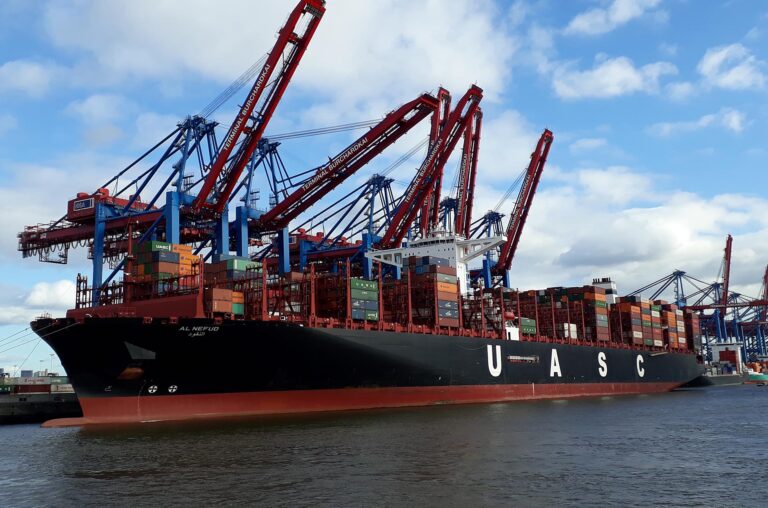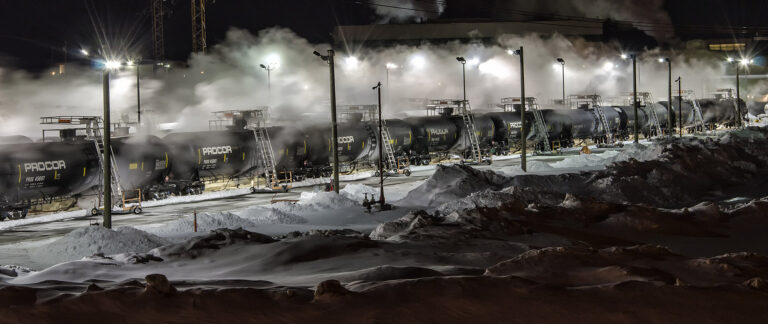The World Health Organization has estimated that between 2030-2050 climate change will cause...Read More
Over the next 30 years, 143 million people are likely to be uprooted by rising seas, drought, searing temperatures and other climate catastrophes, according to the 2022 report of the UN Intergovernmental Panel on Climate Change.
As Ian Fry, the special rapporteur on human rights in the context of climate change, said to the UN General Assembly when presenting his first report, “We are faced with an intolerable tide of people moving from their homes due to the impacts of climate change.”
The movement of people in response to climate impacts may range from a pro-active strategy to adapt to slow-onset impacts of climate change to forced displacement in the face of life-threatening risks, and may occur within or across international borders.
Examples of migration occurring in a changing climate are numerous: (a) communities in Pacific islands forced to plan for relocation further inland due to coastal erosion; (b) storms in populous Asian countries displacing tens of thousands of people; (c) migration of fisherfolks from coastal villages in West Africa to cities because of the depletion of fish resources linked to ocean acidification; (d) rural to urban migration in Central Asia fueled by climate impacts on rural livelihoods; (e) nomadic populations in East Africa altering their traditional migration patterns to cope with the impacts of desertification; and (f) droughts in Latin America leading to internal and international migration. As these examples make clear, the ways in which adverse effects of climate change impact migration are various and complex.
The protections available to those moving in response to climate change vary greatly, with the greatest protection given to those internally displaced by disasters, and the least to those moving across international borders as a proactive adaptation to slow-onset climate impacts. The key factors determining the level of protection are the perceived “voluntariness” of the movement and whether those moving stay within their own country or cross international borders.
Climate Refugees
While those uprooted by climate change are often referred to as “climate refugees,” most are not refugees within the definitions of the 1951 Refugee Convention and the 1967 Protocol to that Convention (Refugee Convention). The Refugee Convention provides legal protection only to people fleeing persecution due to their race, religion, nationality, political opinion or particular social group. It thus generally does not apply to those fleeing extreme weather events, drought, or other impacts of climate change. The Refugee Convention may offer protection to those affected by climate change in a limited number of situations:
- If a government withholds or denies relief from the impacts of climate change to specific individuals who share a protected characteristic in a manner and to a degree amounting to persecution;
- If national authorities use the negative impacts of climate change to persecute particular groups of individuals; or
- If climate change triggers serious human rights violations or armed conflict that causes people to flee based on a well-founded fear of persecution.
In such cases, protection stems from actions or inactions of the national authorities that meet the existing definition of persecution under the Convention – not from the adverse effects of climate change. Climate activists or environmental defenders persecuted for speaking out against government inaction on climate change may also have a plausible claim to refugee status.
At least two regional instruments define “refugee” more broadly and could potentially be applied in the context of movement induced by climate change. The 1969 Organization of African Unity Convention Governing the Specific Aspects of Refugee Problems in Africa extends refugee status to those who “owing to events seriously disturbing public order, are compelled to seek refuge outside their country. The Convention has been ratified by 46 countries in Africa. The 1984 Cartagena Declaration on Refugees, adopted by 10 states in Latin America and now implemented in domestic law in 14 states, extends the definition of refugees to people who have fled their country because “their lives, safety or freedom have been threatened by massive violation of human rights or circumstances which have seriously disturbed public order.” While these instruments are legally binding on ratifying states, it is not yet clear whether or how broadly they will be applied to climate-related impacts.
For those who do not fit within the definition of “refugee” in an international or regional convention, there is no affirmative international right to enter another country, and limited treaty-based protections once they do so. The only limitation on the ability of states to put in place barriers to entry or to deport those who succeed in crossing international borders is the principle of non-refoulement – that states should not return individuals to a place where they face serious risk of irreparable harm.
Those who move across international borders in the face of adverse climate impacts and don’t meet the limited definitions of refugee under international or regional law face the same challenges as other types of irregular migrants, including economic migrants. While international human rights instruments including the International Covenant on Civil and Political Rights (ICCPR), the International Covenant on Economic, Social and Cultural Rights (ICESCR) obligate States to respect, protect, and fulfil all human rights for all people under their jurisdiction without discrimination, including irregular migrants, in reality, those without status are often subject to arrest and, except as may be limited by non-refoulement restrictions, deportation. In some countries, they may face criminal penalties, and in many countries they face restrictions on access to basic human rights, including education, health care, and adequate housing.
Some climate-induced displacement, including cross-border displacement, occurs in the context of a disaster such as flooding, drought, landslides, glacial lake outbursts, or tropical storms caused or amplified by climate change. While there are no international treaties governing the treatment of those forcibly displaced by disaster, there are a number of non-binding frameworks in place intended to guide states in disaster prevention and management. In general, those fleeing a disaster, including those due to climate change, are treated more generously than those that flee in advance of a disaster or in response to slow-onset impacts of climate change – in part because it is assumed that their stay will only be temporary.
Internally Displaced Persons
The majority of those who move due to climate change will move within their own country, at least initially. In a recent report, the World Bank estimated that, without significant mitigation and adaptation action, 216 million people could be internally displaced by slow-onset impacts of climate change by 2050 in just six regions – Latin America, North Africa, Sub-Saharan Africa, Eastern Europe, and Central Asia, South Asia, East Asia and the Pacific. The scale of internal climate migration will be largest in the poorest and most climate-vulnerable regions. As with cross-border movement, some will move in response to sudden-onset disasters, while others will move as an adaptation measure to deal with deteriorating conditions.
For internal displacement situations, national authorities have the primary duty and responsibility to provide protection and humanitarian assistance to internally displaced persons within their jurisdiction. The UN Guiding Principles on Internal Displacement set out the duties and responsibilities of States to prevent and avoid the conditions leading to displacement, including disaster displacement, to provide humanitarian assistance and protection to internally displaced persons and to support durable solutions. The Guiding Principles explicitly refer to flight from “natural or human-made disasters,” such as those arising from climate change, and set out state obligations before, during and after displacement. However, the Guiding Principles deliberately exclude those displaced for economic reasons.
Those who move within their own country, not in the context of a disaster but as an adaptive mechanism to slow-onset impacts such as desertification, land degradation or sea level rise, are considered internal migrants rather than IDPs. While the government retains its obligations to respect, protect and fulfil their human rights, they will not be able to access any of the types of humanitarian aid normally provided to IDPs – particularly those who have moved to urban areas in search of work.
Need for Protection
There is an urgent need to fill the protection gaps for those who move in the context of climate change. As noted by the Special Rapporteur on the human rights of migrants, Felipe Gonzales Morales:
There is a need for migration with dignity for all migrants, including those affected by climate change, and to address their human rights and protection needs. …. States should put into action their commitment to expand and diversify the availability of pathways for safe, orderly and regular migration, as well as to put in place appropriate mechanisms to guarantee that all migrants who require human rights protection and are unable to return to their countries owing to climate change are provided with a legal status.
Under the auspices of the United Nations, states have voted on a series of declarations and resolutions that call for increased pathways for safe and legal migration, including migration linked to climate change. While these declarations and resolutions, if binding, would represent a sea change in the treatment of migration, none has any legal force, and little progress appears to have been made in reaching agreement on how to implement their aspirational goals.
The New York Declaration for Refugees and Migrants was unanimously adopted by members of the UN General Assembly in 2016. The declaration, which is intended to address “the question of large movements of refugees and migrants,” specifically recognizes that some people move “in response to the adverse effects of climate change, natural disasters (some of which may be linked to climate change), or other environmental factors.” The Declaration calls for the creation of safe, regular pathways for migration, and for the creation of a comprehensive, rights-respecting framework to respond to the flow of migrants and refugees.
The Global Compact on Refugees, adopted by the UN General Assembly on December 17, 2018, recognizes that “climate, environmental degradation and natural disasters increasingly interact with the drivers of refugee movements.” It does not, however, suggest that climate-induced displacement makes those moving eligible for refugee status under the Refugee Convention.
The Global Compact for Safe, Orderly and Regular Migration was adopted by 164 countries at an intergovernmental conference on migration in Marrakesh on December 19, 2018, and endorsed by the UN General Assembly in January 2019. While the Compact is not legally binding and gives no rights to climate-induced migrants, it does recognize climate change and environmental degradation as drivers of migration. At the first International Migration Review Forum to assess progress on implementation of the Global Compact on Migration, states adopted the Progress Declaration. The parties to the declaration commit to:
Enhance and diversify the availability of pathways for safe, orderly, and regular migration, including in response to demographic and labour market realities, and for migrants in vulnerable situations, as well as those affected by disasters, climate change and environmental degradation.
Photo Credit: Women, walking with what possessions they can carry, arrive in a steady trickle at an IDP camp near the town of Jowhar, Somalia. Heavy rains in Somalia have resulted in thousands of Internally Displaced Persons (IDPs). Photo by Tobin Jones (CC0 1.0)
More reading...
Regional courts, such as the Inter-American Court on Human Rights (IACtHR), and European...Read More
In response to the threats posed by climate change, including its foreseeable significant...Read More
The combustion of fossil fuels, including oil, gas, and coal, is the single...Read More
The Paris Agreement established the goal of increasing “the ability to adapt to...Read More






